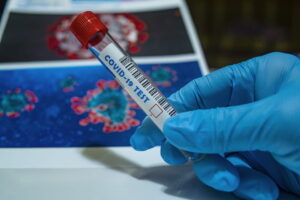by The Cowl Editor on October 15, 2020
Opinion

by Peter Mazzella ’22
Opinion Staff
In the midst of a global pandemic, universities across the country are dealing with similar problems: keeping the campus and community safe while still offering the experience students are used to. While the recent spike in Providence College’s positive cases may seem daunting, there is a faculty and student population who are more than dedicated to devising and following a plan that ensures our campus’s safety. There is also a large discrepancy in the testing practices of PC and neighboring Rhode Island colleges that may help to explain why PC has had an outbreak, but other colleges and universities appear to remain healthy.
With students’ return to campus, the possibility of an outbreak is something that PC’s contingency plan anticipated. The sheer volume of faculty and students prepared the College to enact protocols in a timely manner. Restricting students to stay on campus for a quarantine period and moving to online classes helped suppress the recent outbreak before its consequences were irreversible.
What contained the outbreak at PC was the extensive testing of students on a weekly basis. According to the most recent statistic, PC’s total student and faculty test count sits at 26,930 tests, as of Oct. 14. . Of those tested, 246 have tested positive, which rounds to 0.91 percent of the population tested.
Other Rhode Island schools, such as the University of Rhode Island, have far larger undergraduate student populations. However as of the most recent data, URI only administered 6,944 tests between Oct. 6 – Oct. 12. While this may seem like a high number of tests, it is underwhelmingly small relative to the overall size of the URI student population, and may be part of the reason why only 137, or 2 percent, of those tested have tested positive.
Salve Regina University, a school with an undergraduate population of 2,167 students, has administered 3,863 tests, with three students testing positive, which equates to 0.078 percent. Comparing these numbers to URI, whose undergraduate student enrollment is 13,790, raises questions as to the low number of students and faculty being tested. This may help explain the gap between schools who have had higher positive test results and those who do not.
Putting an emphasis on the safety of students as well as the surrounding community, PC has exceeded expectations in handling this outbreak, and truly showed its attention to detail in preparing a plan of action, should an outbreak happen again.
Through mandatory weekly testing and timely results, the College can react accordingly on quarantine protocols to ensure everyone’s safety. Using PC as a precedent for outbreak protocol, surrounding Rhode Island schools should follow in their footsteps and develop a standard for the safety of those living in the state.
After reviewing these statistics, it is apparent that a higher student population does not correlate to the number of tests being administered. For a much smaller school like PC, the overwhelming difference in the number of students being tested in comparison to these other schools might explain why PC’s mandated quarantine was put into place.
The College’s numbers may appear high; however, this is primarily due to the sheer amount of tests being administered. Mandatory testing is the most effective way to contain a virus, especially during a global pandemic. If schools do not test frequently, there will naturally not be as many known active positive cases. Thus schools that are not testing frequently must change their course of action, as it is the responsibility of these institutions to keep the state of Rhode Island, and surrounding communities, safe.